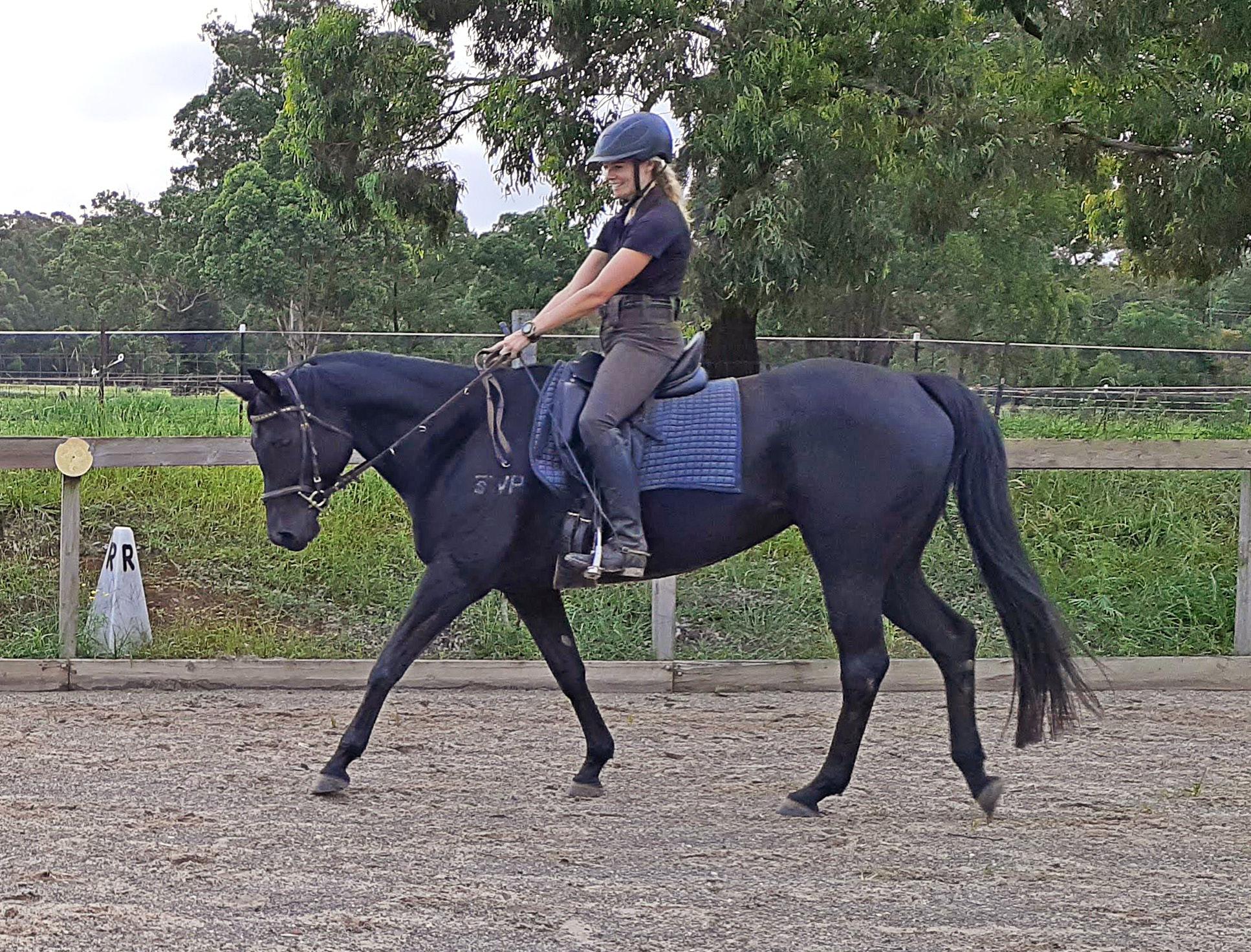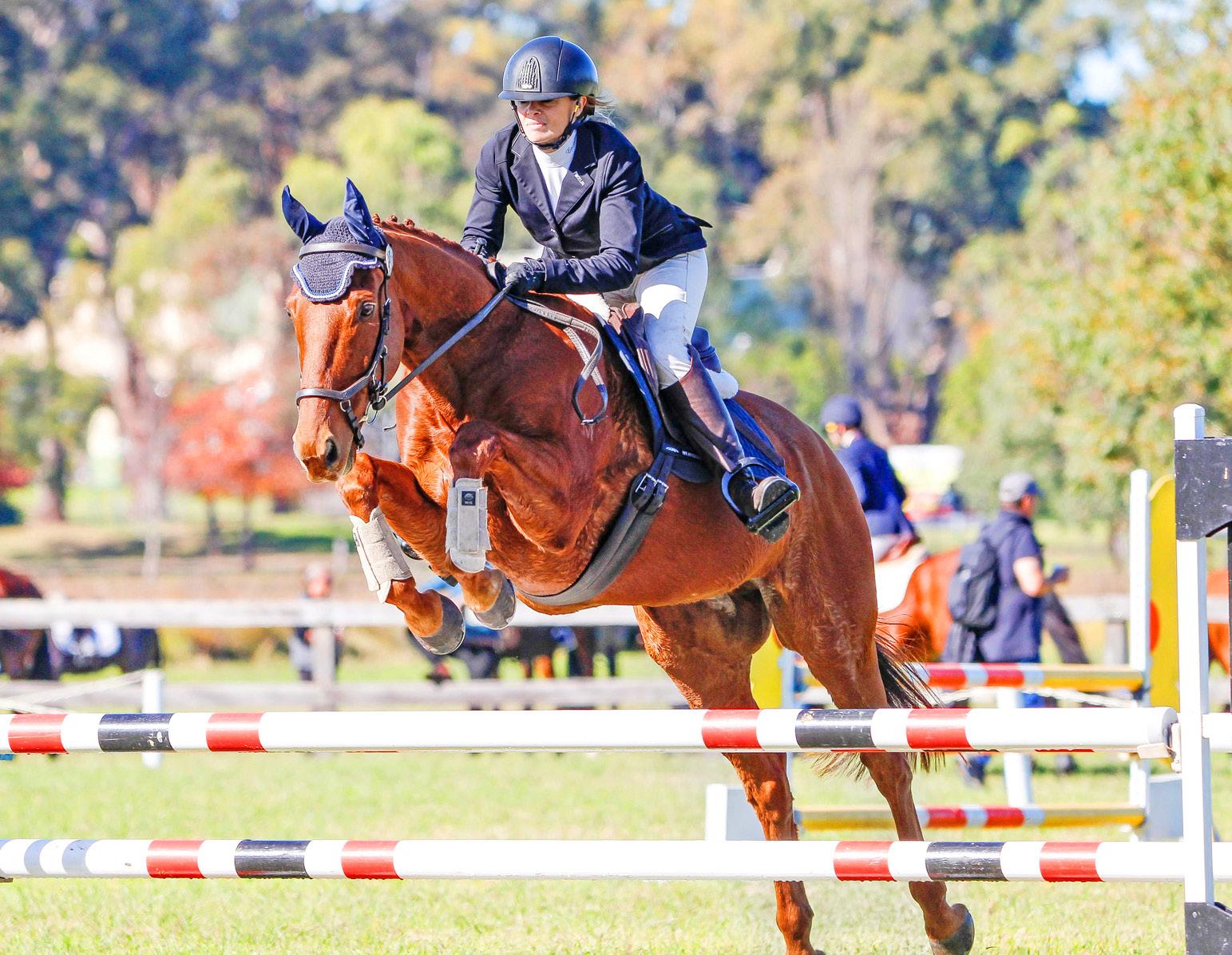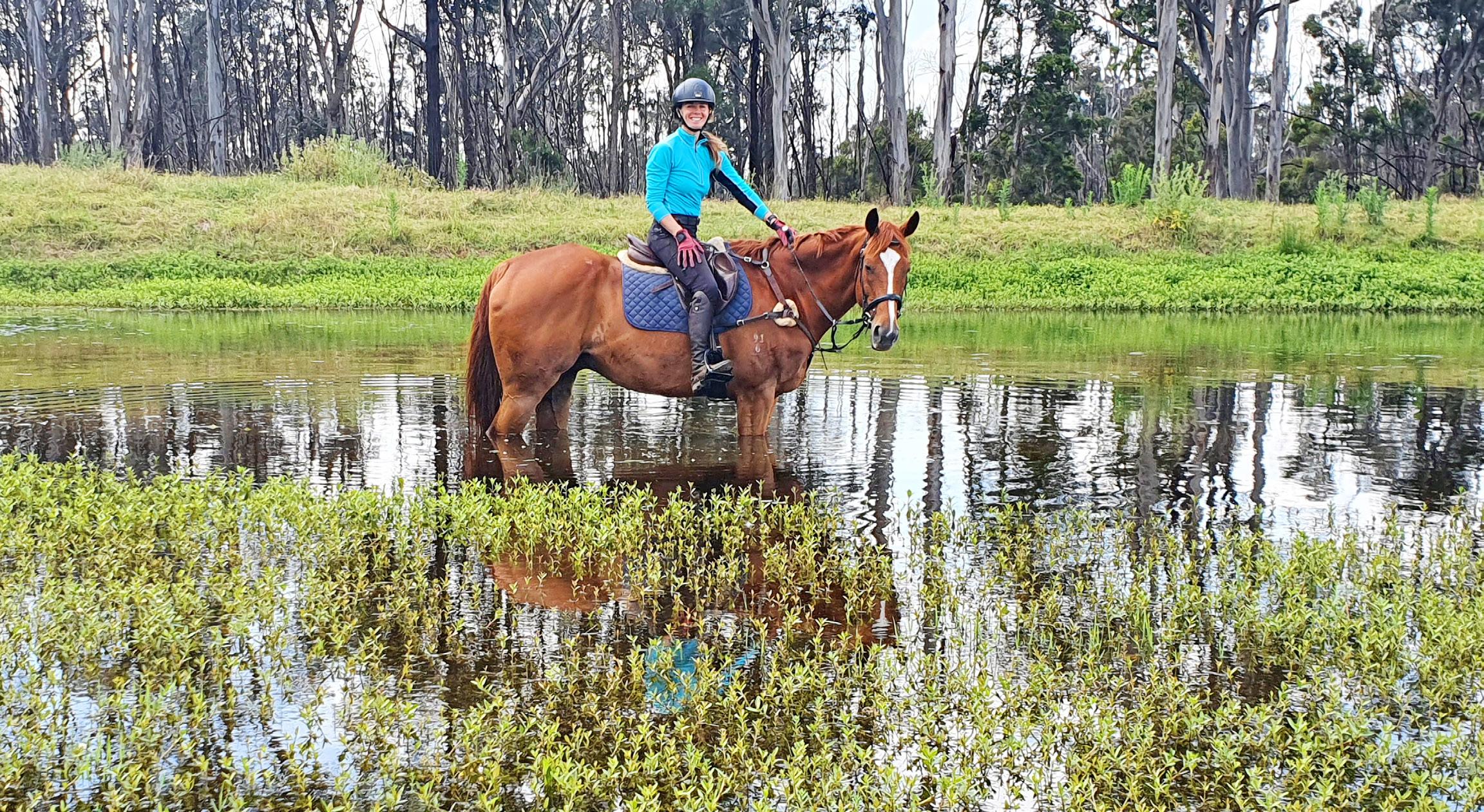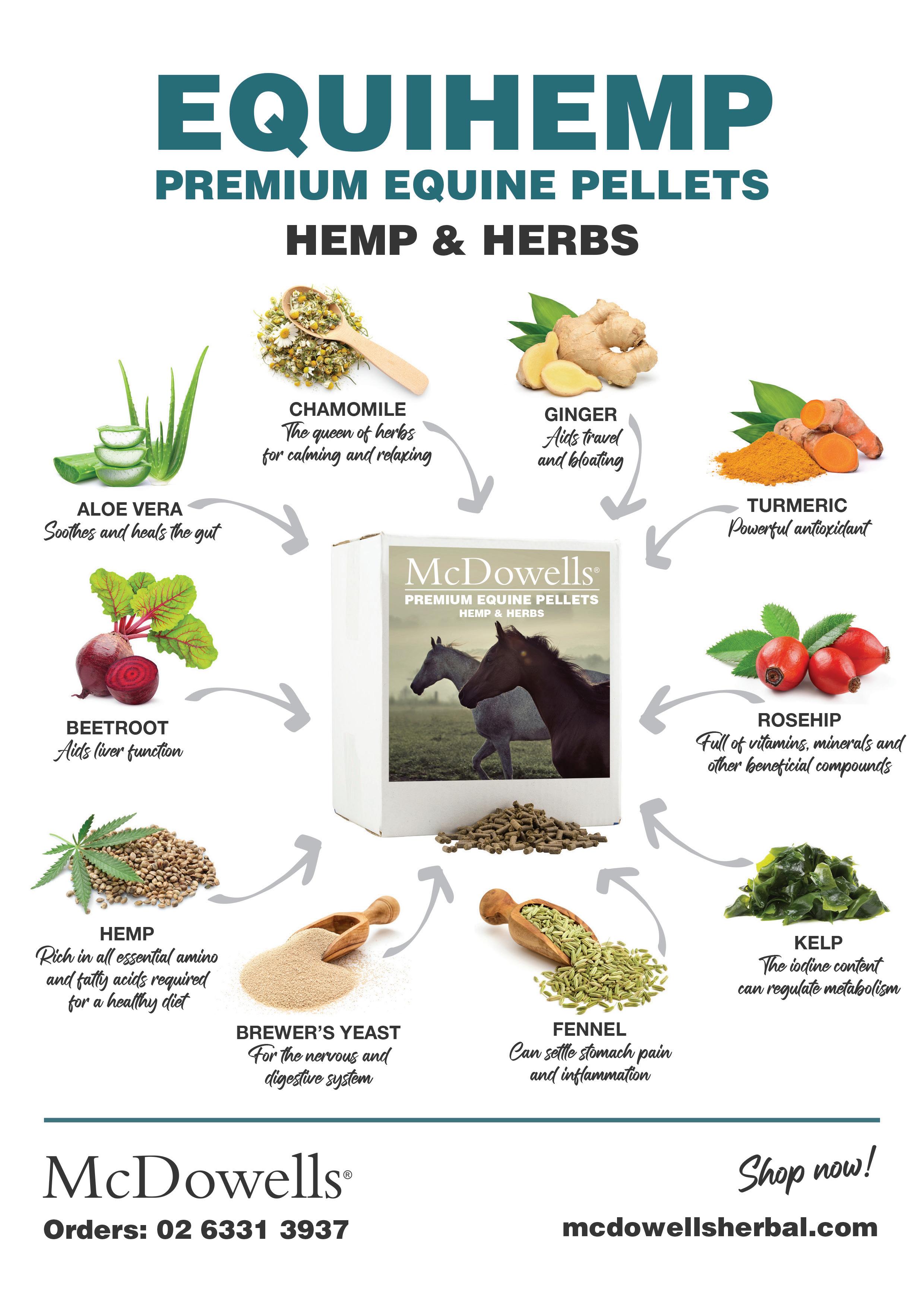
6 minute read
Feature: Keeping your athlete fighting fit
FEATURE
Keeping your athlete fighting fit
Looking after your equine partner while in heavy work is vital. CHRISTINE ARMISHAW discusses what that entails and how to go about it.
Whatever your riding goals, the on-going care of your equine is paramount if you want to remain in the game. Heavy work entails roughly four to five days of work a week, and careful management across the board is a must. Your biggest focus should be keeping your horse healthy and sound.
Work variety
It’s important to take time and build up your horse’s workload gradually. Fitness is gained incrementally and conditioning training is best spread over two to four sessions per week, with non-fitness days in between. day. Cross-training is great for overall body conditioning, and it helps lower the likelihood of injury as you are not just working (and potentially overworking) the same set of muscles day in and day out. Plus, it’s mentally refreshing for both horse and rider.
Eventers know all too well the importance of incorporating a wide range of activities and exercises, but even pure dressage horses and show jumpers will benefit greatly when engaged in a varied program. Mix it up with flat work, ground work, pole work, cavaletti schooling, jump training, lunging or long-reining, trail rides and water fun - the options are many!
Warming up and cooling down
Don’t skip the warm up. Research shows it takes at least five minutes for synovial fluid to start lubricating the joints. I always spend the first five minutes of my ride in a walk and encourage the horse to reach forward and down, inviting a stretch from the poll, down the neck and along the back, all the way to their tail. From there, I spend a further five to ten
minutes in trot, still aiming to allow them to stretch forward and down, to warm up the muscles and loosen through the back, all before asking them to start working in a frame.
Take time to cool your horse down too. Keeping them moving around for 10 to 15 minutes, especially after a high intensity workout, gives the body time to disperse built up lactic acid, which may otherwise cause muscle soreness.
Footing
Always pay attention to the going you are riding on and how it may impact the legs. If it’s wet, slippery and dubious, slow everything down. There are lots of gains to be made from working in walk and the risk of injury is greatly decreased.
If you train in a sand arena on a regular basis, be aware of the depth of sand. If, when you are walking in it off horse, you find it deep and hard to move through, you are potentially leaving your horse vulnerable to suffering ligament or tendon injuries. Ideally, your horse should travel on top of the surface, not in it. And adding more sand does not improve matters, in fact it can be quite the opposite.
Leg protection
Using boots for the sake of it isn’t always in your horse’s best interests. Research has shown they actually do very little to support the tendon, and that legwear that restricts range of motion, like boots encompassing the fetlock joint (often used during dressage schooling), can do more harm than good. While potentially beneficial in the case of an injured joint, in a healthy joint they reduce its ability to dissipate forces during the loading phase of the horse’s stride, which may lead to overloading of other limb structures.
Another big factor when considering leg coverings is heat produced from tendons. The internal tendon temperature can exceed 45°C during intense periods of exercise. Normally this heat is transferred to the skin via blood vessels and undergoes a cooling effect as the limb moves through the air. However, when a boot or bandage is added, heat loss is greatly reduced.


If a horse has a tendency to knock the inside of its opposite front leg, then brushing boots are probably a good idea. If it overreaches, then well-fitting
FACING PAGE: Christine never puts boots on for the sake of it, but always uses protective boots for XC training. TOP: Spend at least five minutes in walk, encouraging your horse to stretch forward and down. BOTTOM: A horse expected to perform at its best must be kept healthy, sound, and in the best condition possible (Image by Snapshotaustralia). Images courtesy of Christine Armishaw

There are many ways to mix up your horse’s training, and water is one of them.
bell boots would be wise. As far as cross country training goes, I’d always recommend a set of good quality protective boots to mitigate bumps and scrapes. But it’s really important to remove the boots promptly so the horse’s tendons cool as quickly as possible after exercise.
Feed
A horse’s feed should be primarily made up of fibre; it’s what they have evolved to thrive on. This can include grass, hay, chaff, haylage, beet-pulp and other high fibre forage. You may find a horse in heavy work needs a little extra and upping the fibre levels is where you should start. If you are still looking to add more weight or to improve condition, adding oil is preferable to increasing cereals or boosting the protein components, both of which can cause problems.
Whichever feed brand you choose from the many available, in order for your horse to access all the key minerals they require, you need to feed according to the manufacturer's guidelines. However, if you are feeding less than the recommended quantity, you can make up for any shortfalls in the diet by adding a quality mineral mix. Also, be sure to add non-iodised salt to the diet; a salt lick left in the paddock is not sufficient.
Base care
Prevention is always better than cure. Making sure a horse in regular work is up to date with all farrier and dentistry needs is generally going to ensure it is comfortable and able to perform well. Scheduling in time for body work is also important. Getting a qualified body worker out every six to eight weeks is a great way to keep one step ahead in the quest towards keeping your athlete fighting fit. If you have multiple horses, an alternative may be to invest in a massage pad. Either way, being proactive rather than reacting only when a problem arises, will help see your horse remain happily in work.
Plan to rest
A horse in heavy work should be working along an overarching training plan. Ideally you are striving towards competing at a selection of hand-picked events, with rest periods in between and a proper break at the end of the season.
Your horse should have at least one day off per week, and breaks between events can often be for longer than you might think. A horse maintains fitness for approximately three to four weeks before levels start to drop off. So giving them a week off after an intense competition is not unreasonable, and allows them to both physically and mentally recharge.
Finally, at the end of the season, turn your horse out for a much deserved spell. This is also an opportunity to remove their shoes to rest the feet, which should be done for at least one farrier cycle annually. Have a chat with your farrier on the best way to go about it.
A happy and healthy horse is always going to do a better job than a grumpy or sore one. Do your best to treat your steed like the athlete they are and, if all goes well, you will be rewarded with a wonderful, long-lasting partnership that stands the test of time.











